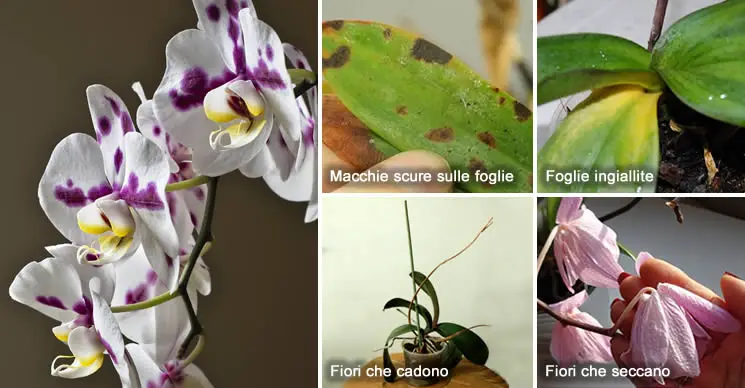Orchids, like all plants, are susceptible to diseases and attacks by various pathogens such as bacteria, fungi, and insects. Taking the right measures, however, can minimize the risks. Issues like excessive temperature or humidity, poor ventilation, or inadequate care can lead orchids to not bloom or, in some cases, even face death.
Fungi: Fungi pose a significant threat to orchids, often manifesting as dark spots or blemishes on leaves and flowers. They can alter flower colors, making them yellow or darker. Excess humidity, high temperatures, and poor ventilation are major contributors to fungal growth. Combat fungi by mixing about 4 grams of baking soda in a water bottle with a spray nozzle, thoroughly spraying the plant.
Bacteria: Bacterial infections cause watery spots and dark-colored lesions on leaves. Virus-affected parts decay rapidly. Bacteria thrive in overly humid environments, and unfortunately, there is no foolproof treatment. However, if caught early, you can disinfect the affected area with cinnamon powder, which has antibacterial properties.
Insects: Aphids are a primary threat, sucking the life out of plants and causing deformities. Other orchid-harming insects include mealybugs (recognizable for their cotton-like texture), mites, and others. Combat these pests using a natural insecticide made from alcohol and garlic. Alternatively, a neem oil-based natural insecticide, available at specialized stores, can be effective.
Other Common Orchid Problems and Solutions:
- Lack of Light: Prevents flowering, weakens stems, and darkens leaves. Solution: Find a suitable location near a window without direct sunlight.
- Lack of Humidity: Stunted flower growth, whitening roots, yellowing, and falling leaves. Solution: Increase water application, preferably using a spray bottle.
- Temperature Anomalies: Excessive or insufficient warmth can lead to leaf drop. Solution: Adjust the temperature by measuring and, if necessary, relocate the plant.
- Excessive Water: Rotten, darkened roots, and yellowing leaves. Solution: Allow the soil to dry between waterings.
By addressing these common issues promptly, you can ensure the health and vitality of your orchids, fostering a thriving and beautiful display.



